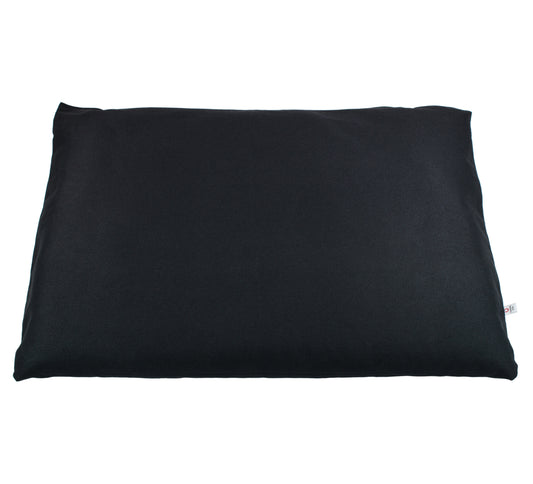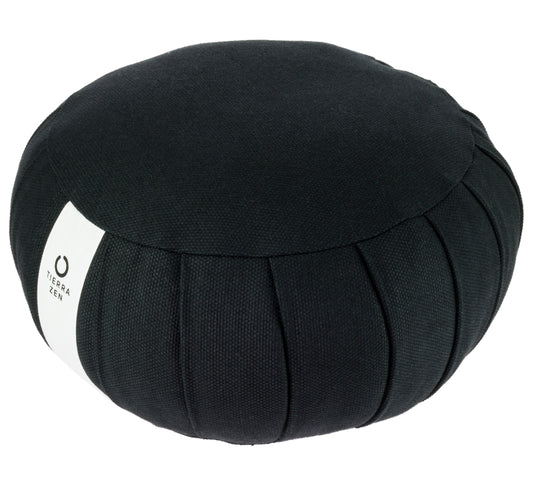
What are the benefits of meditation?
We are sure that many of you have heard of meditation and have seen how many people practice it. Images come to mind of people with their legs crossed, hands on their knees and eyes closed, but... What are they really doing? What are they really doing, resting? Quite the opposite, meditation is an exercise that is halfway between a mental training and an art. In this blog we will tell you a little more about meditation, the benefits of practicing this art and what you need to get started.
What does meditation consist of?
If we pay attention for a moment to what exactly meditation is, we discover that it is a technique that has been used in the Eastern world for centuries. This art is nothing more and nothing less than a practice of self-control aimed at regulating the body and mind towards a state of deep relaxation. It is a state of consciousness where thought is observed but without thinking.
It is actually a process inherent in the human being that allows us emotional and physical regulation, in short, it consists of learning not to think. It should not be confused with putting the mind in blank since they are very different practices.
Sometimes a fine line is drawn with other concepts that are also in the Eastern world's cloud of ideas related to relaxation. These are introspection, reflection, thinking, analysis and discrimination, concentration and visualization and imagery. All these concepts and exercises should not be confused with meditation, since their practice is very different and so are the results obtained.
Within the wide range of the meditation concept, we can find different methods that can be used in the same way but that have small differences and therefore allow them to be better adapted to the needs or capabilities of the practitioner.
Vipassana Meditation
Vipassana is one of the meditation techniques of India and is one of the oldest. It was taught by Gotama Buddha, who rediscovered it more than 2500 years ago as a universal remedy for universal ills, in other words, as an art, in this case, the art of living.
The purpose of Vipassana meditation is to eliminate mental impurities, which results in liberation and healing of human suffering. It is a path of self-transformation through self-observation.
The practitioner should concentrate on the deep interconnection between mind and body, such as observing the physical sensations that form the life of the body and condition the mind. This type of meditation leads to a balanced mind, full of love and compassion.
Zen Meditation
In the Buddhist school, meditation is one of the basic tools and main practices. With this practice we aim to reach the state of full consciousness, where there is no longer ignorance and as a consequence we are able to reach nirvana, a state of absence of desire and, therefore, also of suffering.
Zen meditation aims to eliminate everything unnecessary or superfluous, in order to eradicate all the noise that can distract us from what is important. In this way, we get the mind to calm down and focus with greater capacity in the meditative process. By doing this process of eliminating everything necessary and distractions, this zen meditation resembles minimalism.
The benefits of this meditation are several, in general, improve the state of health and serves as a great help to treat depression or anxiety and improve self-control and emotional management skills.
Mindfulness Meditation
This meditation technique encourages changing the way we think, feel and act. Its main purpose is to demonstrably improve people's quality of life. The main objective of mindfulness is to focus on the moment, in the here and now.
Mindfulness meditation manages to separate the person from his or her thoughts so that he or she can recognize them and question mental patterns, thus focusing on the present. It promotes relaxation and well-being of the individual through concentration and control of the sensations and actions that are experienced daily.
What are the benefits of meditation?
Throughout this entry we have already glimpsed the many benefits of meditation. Anyway, we are going to collect them all at this point, as a summary to finish the theoretical part and get into how to start.
So, if you still lacked reasons to start with meditation, these are the main benefits and what you will get back in return for practicing it:
- Because it improves concentration.
- It soothes and purifies the mind.
- It helps to know oneself and generates well-being.
- Develops compassion and optimism.
- Contributes to reduce anxiety and obsessive thoughts.
Let's get started... What do you need and how to get started?
It is time to get down to work and put into practice everything we have learned. Meditation is in its essence to get rid of everything that is not necessary, therefore, to practice meditation we will need only what is essential to live, that is, our body and our breath.
You will find it much easier to concentrate on meditation if you do it in a quiet space and at a time of the day for you. It is important that you focus on a method as its practices are different, and you must focus on the objective and the steps to follow to achieve what the technique proposes.
Follow that concrete line and go deeper into it. One "sit" a day is enough to start, but be constant. And practice with the right attitude: 0% expectations, 100% patience.
Posture is important: the back should be straight and the pelvic area open. For this, the ideal is to sit on a meditation cushion or zafu, but you can use a stool, cushions or a chair. Sit with your pelvis higher than your knees. Once you are comfortable, straighten your back. Lift the back of your neck, as if pulling it up. Tilt your chin inward. Check the entire posture, relaxing any tense muscles. And just breathe. You are already meditating.
From Tierra Zen, we hope that this post has clarified the general concepts of meditation and that it has awakened in you the desire to practice it. It is a wonderful world! You will see how much it can bring you and how it will improve your life.





